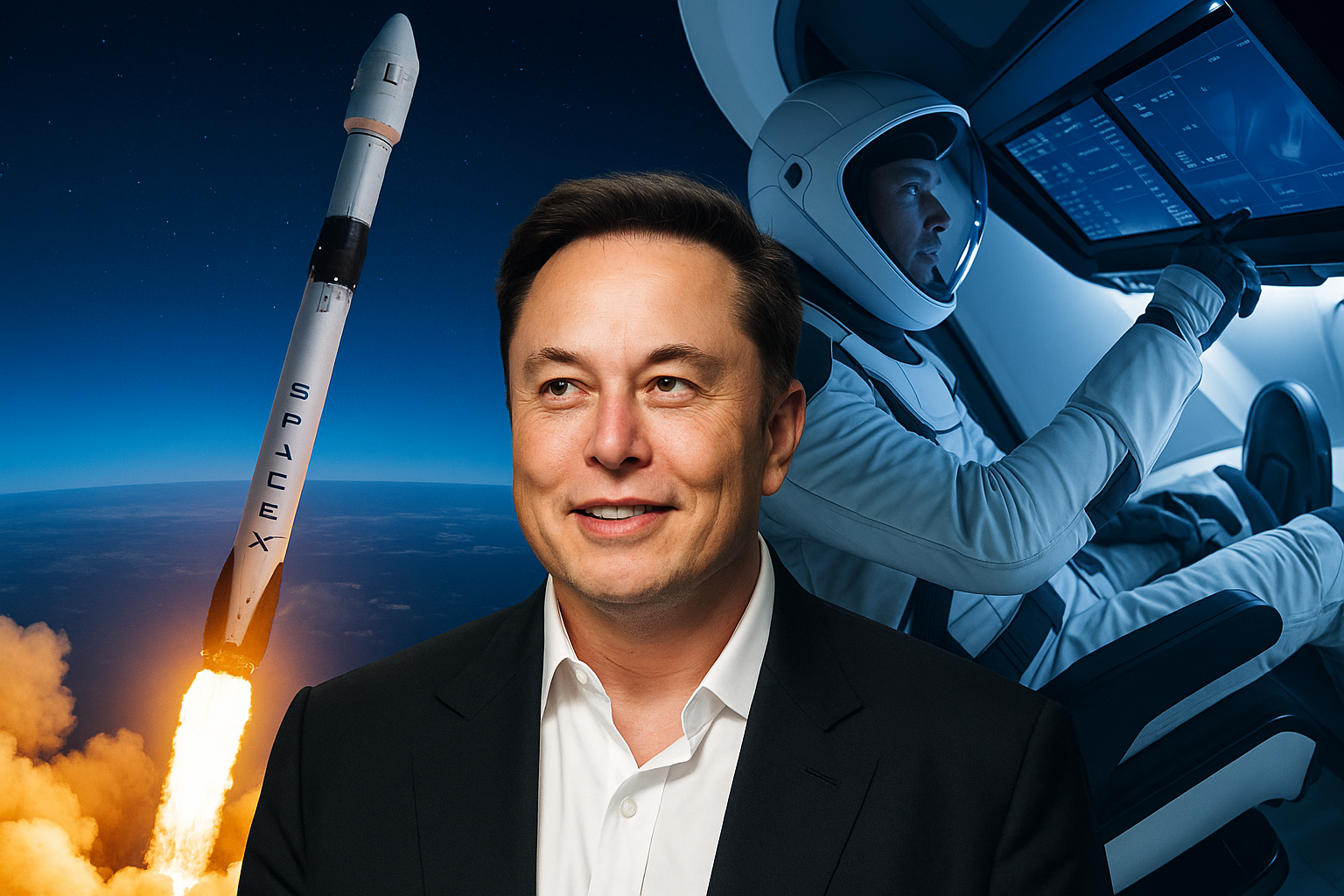In late March 2025, the private spaceflight sector reached a major milestone. SpaceX’s Fram2 mission, launched from NASA’s Kennedy Space Center, became the first crewed mission to achieve polar orbit—a trajectory that passes directly over the Earth’s poles, historically used only by reconnaissance or environmental satellites.
The four-person crew was composed entirely of private astronauts: Maltese investor Chun Wang, cinematographer Jannicke Mikkelsen, robotics researcher Rabea Rogge, and polar explorer Eric Philips. During their four-day journey aboard the Crew Dragon capsule, they conducted 22 experiments related to human physiology and captured never-before-seen images of the Earth’s polar regions.
One particularly striking outcome: the crew returned in excellent health and walked unassisted upon landing—a sign that commercial flight profiles may soon support even longer-duration missions .
The Economic Lift-Off of Private Spaceflight
The Fram2 mission underscores a profound transformation: space is no longer the sole domain of governments. With SpaceX, Axiom Space, Blue Origin, and others stepping in, a new multi-billion-dollar private space economy is emerging.
Analysts at Morgan Stanley forecast the space economy could surpass $1 trillion by 2040, with space tourism and passenger travel alone representing $300 billion of that total. Lower launch costs—thanks to reusable rockets pioneered by SpaceX—and increasing investor interest are rapidly commercializing low-Earth orbit.
Private missions, like Fram2, also introduce alternative funding models. Instead of state budgets, missions may be bankrolled by private individuals or organizations in exchange for branding rights, research opportunities, or venture exposure.
Technology That’s Fueling—and Fueled By—Space Tourism
As space tourism becomes more frequent, the required technological advancements are transforming industries well beyond aerospace. Missions like Fram2 rely on AI-based diagnostics and navigation, lightweight composite materials, robotic assistants for microgravity experiments, and advanced crew monitoring and recovery protocols.
These innovations are also being adapted for use in sectors like healthcare, autonomous vehicles, and defense systems, according to NASA. More futuristic developments are underway as well. SpaceX and other private entities are now collaborating on commercial space stations like Orbital Reef and Axiom Station, designed not only for science but also for tourism, media, and even manufacturing.
The Future of Space Travel and Tourism
Democratization or Stratification?
At present, ticket prices for spaceflights still exceed $50 million per seat, available only to the ultra-wealthy. But as technology advances and competition increases, pricing is expected to fall, possibly following the trajectory of early commercial aviation. This shift could eventually open the door to scientists, educators, filmmakers, and civilians from less privileged backgrounds. The space economy might democratize—or deepen global divides—depending on how infrastructure, subsidies, and regulatory norms evolve.
A Global Ground Game: Spaceports and Supply Chains
To support this new industry, governments and companies worldwide are racing to build spaceports and reentry hubs. The Federal Aviation Administration licensed 12 commercial spaceports in the U.S. alone in 2024, while the UAE, UK, and Australia have joined in with national programs to support launches and crewed missions. This expansion also feeds new opportunities across insurance, training, logistics, and hospitality—a ripple effect touching nearly every corner of the global economy.
Human Resilience and Health Innovations
Fram2’s success in returning a healthy crew that could walk unassisted is more than a medical marvel—it could redefine rehabilitation and health protocols for future long-duration missions to the Moon, Mars, and beyond. There’s already a push to apply insights from space medicine into telehealth, aging studies, and trauma recovery systems on Earth.
Ethical Frontiers in Space Commercialization
As with any technological leap, private space exploration raises serious ethical questions. Who gets to access space? What are the ecological costs of rocket launches? Could lunar or Martian territories be unfairly claimed?
Scholars are calling for a new ethical framework—one that blends scientific integrity, social responsibility, proportionality, and sustainability. A recent paper in Nature Communications argues for proactive guidelines around human subject research, environmental impacts, and equity in access. Without such frameworks, there’s a risk that the final frontier becomes a new venue for inequality, overreach, and ecological degradation.
Final Note
The Fram2 mission may go down in history as the Apollo moment for the commercial age—a proof-of-concept that private spaceflight is not only viable but potentially scalable. It also confirms that human spaceflight is on the verge of becoming an interdisciplinary, international, and investment-driven arena.
Still, the future of space travel must be shaped by more than ambition. It will demand ethical foresight, regulatory coordination, and inclusivity, ensuring that this next great leap is not only profitable—but principled.













